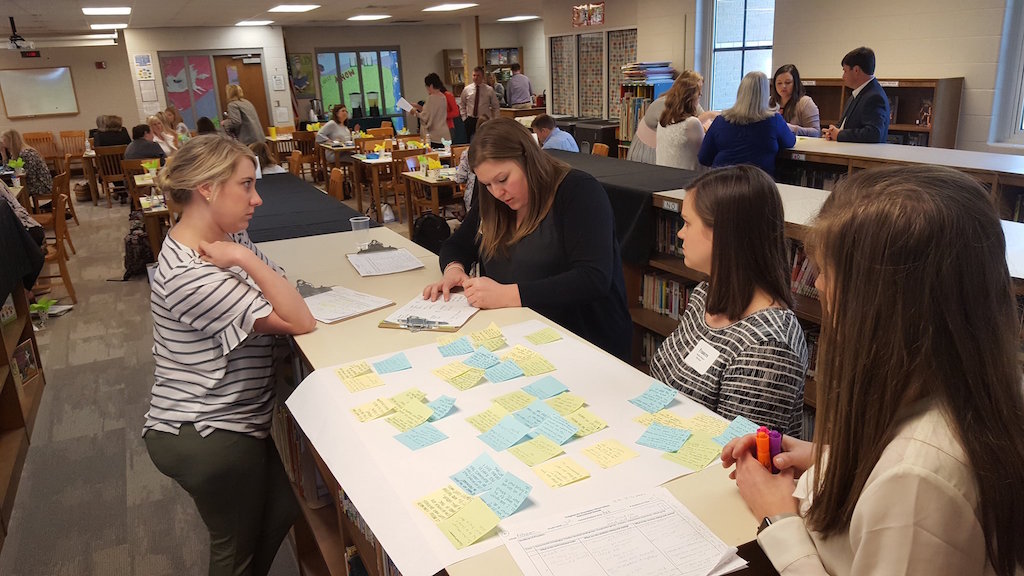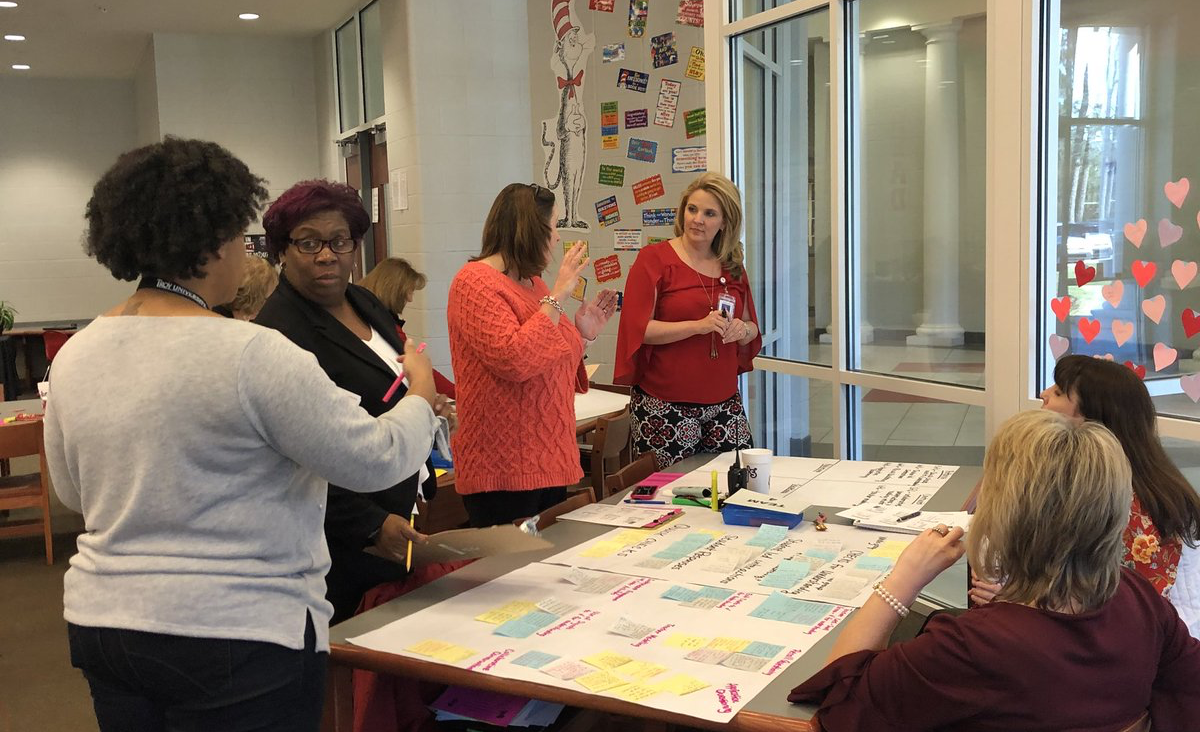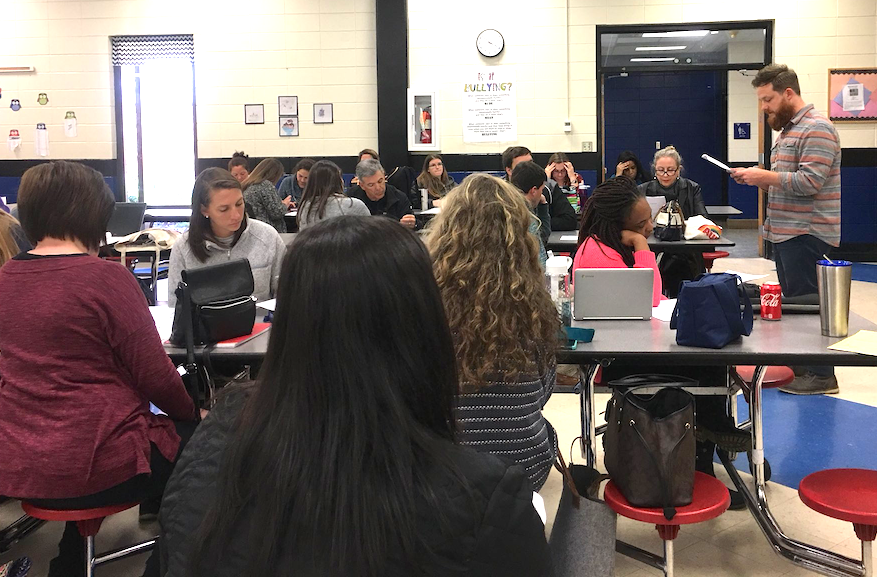As the 2017-18 season of Instructional Rounds at the Alabama Best Practices Center (ABPC) are coming to a close, I’ve taken a few moments to think about areas of growth that I have observed since I began facilitating Instructional Rounds in 2014.
I’ve limited my reflection to these years because it was in 2014 that I had the privilege to begin serving as an ABPC consultant, learning and working with so many dedicated professionals across the state of Alabama through the Networks provided by ABPC. Prior to this point, I had been a member of ABPC’s Powerful Conversations Network (PCN) as a principal of a participating school.
From first hearing about the Alabama Best Practices Center, I knew I wanted my school to be a part of the Powerful Conversations Network. It is through this statewide network that highly professional practitioners have the opportunity to discuss, learn and grow in their craft. The Instructional Rounds program is the application piece that concludes a year of work in PCN.
Instructional Rounds – ABPC Style
ABPC Rounds are based on the work of City, Elmore, Fiarman and Teitel as described in Instructional Rounds in Education. Instructional Rounds at ABPC are a little different (you can learn more here).
The combination of participant observers is never the same at any of our rounds and participants bring varying degrees of knowledge about instructional rounds. Our focus is for educators to engage in powerful conversations about high quality teaching and learning in order to develop a common language of what high quality teaching and learning looks like.
Each school hosting Instructional Rounds presents a Problem of Practice for visitors to focus upon. During my years as a facilitator, one area of growth I have noticed is that schools are now writing their Problem of Practice based on professional development that is focused on a schoolwide learning goal and is directly related to the implementation of that goal.
In the first years, when planning with schools for their upcoming round, I would begin the conversation by discussing the writing of a problem of practice. After I shared some background information, the conversation went something like this:
“Let’s first identify your Problem of Practice.” Most often I received one of two responses: “Well, one of the strategies we have been working on is formative assessment – I guess we can make that the problem of practice.” Or, “I know we are good at student engagement and our teachers know how to do that, so maybe that could be our PoP.”

More recently, the planning conversations have taken a dramatically different tone. In a planning conversation with Debbie Miller, Principal at Pelham Oaks Elementary School, she emphasized that the focus of the school’s professional development was on implementing Learning Targets in all areas, including PE, music, and art. This was the first year that Learning Targets had been the focus. In continuing the planning conversation with Elizabeth Nix, Instructional Partner at Pelham Oaks, I realized that she had been conducting in-house Instructional Rounds with various grade levels throughout the school year.
These leaders had a problem of practice that they had been using to aid them in the schoolwide implementation of Learning Targets. It was a natural step for the three of us to collaborate and write the Problem of Practice that would be utilized on the day of the ABPC Round.
More Detailed Evidence
The second area of growth is in the concise and detailed evidence that is recorded by participants during the visit. The quality of evidence recorded takes the depth of conversation to another level in both team and paired team discussions during the round.

At Saraland Elementary, the Problem of Practice focused on student engagement and checks for understanding. Saraland Elementary had engagement as a focus for their professional learning in the previous school year. This year Ashley Lomax, Instructional Partner, and Stan Stokley, Principal, wanted to ensure that student engagement was aligned with the learning target.
Much of the evidence from our Saraland visiting participants stated number of students engaged, the specific activities in which they were engaged, types of groupings (whole group, small group, pairs) as well as specific dialogue between students and dialogue between student and teachers.
This specific evidence sparked conversations that went deeper than just – “yes, students were engaged in speaking, listening, reading, and writing activities that were aligned with the learning target.” Team discussions focused on: the depth of the conversations between students, the different types of checks for understanding used by the teachers and students, and the relationship between engagement and collaboration. It was truly a day of powerful conversations!
My Aha Moment
I began writing this reflection by hightlighting the areas of growth that I have observed from facilitating Instructional Rounds over the past four years. It’s clear to me that Instructional Rounds at ABPC are evolving, with richer problems of practice and concise and detailed evidence and engaging conversations among educators.

As I considered all this growth, I had an “aha” moment. ABPC’s Instructional Rounds program affirms that participating in Powerful Conversations with dedicated professionals from many schools – digging deep into the craft of teaching and learning – is having a powerful impact on classrooms across our state.
Let’s keep the conversation going!
Pat Johnson is a consultant with the Alabama Best Practices Center. Pat has spent her life “being in school, teaching school, managing a school or consulting with schools.” She’s taught multiple grade levels and content areas from kindergarten to college and visited classrooms in Kenya, Bolivia, and Honduras. After a stint as Teacher-In-Residence with the University of Alabama, she expanded her education career to include school leadership.


0 Comments on "Pat Johnson: “What I’m Learning from ABPC’s Instructional Rounds”"